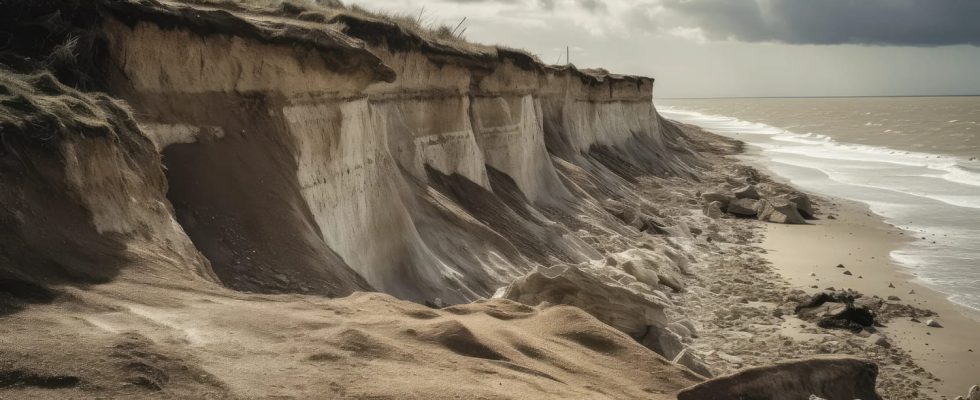Here is the complete list of cities that will be threatened by the sea in the coming years.
The effects of climate change and coastal erosion are felt on French territory. 116 new municipalities have been identified as Zones Exposed to Coastline Retreat (ZERTC). Brittany, Normandy and New Aquitaine stand out as being the most affected regions. They are added to the 126 cities already concerned, which makes 242 French cities in all threatened.
Britain on the front line
Brittany is undoubtedly the most affected region. Municipalities such as Erquy, Lannion and Saint-Brieuc in Côtes-d’Armor or Concarneau, Morlaix and Pont-Aven in Finistère are among the list of areas at risk. Ille-et-Vilaine and Morbihan are not left out, with cities like Dinard and Quiberon also affected. See the full list.
Normandy: the threat becomes clearer
Normandy, particularly the Manche department, is seeing a significant increase in its municipalities in ZERTC. Cherbourg-en-Cotentin, Granville or Agon-Coutainville are towns to watch closely. In Calvados, Courseulles-sur-Mer and in Seine-Maritime, Dieppe are also on the list. See the full list.
New Aquitaine facing erosion
The municipalities of New Aquitaine, in particular on the Atlantic coast, are particularly exposed. Charente-Maritime and Gironde, with respectively La Rochelle, Saint-Georges-d’Oléron and Arcachon, Lacanau, are particularly sensitive areas. See the full list.
Other regions concerned
In addition to these three main regions, other areas in France are affected. In Occitania, municipalities such as Sète, Frontignan in Hérault or Collioure in the Pyrénées-Orientales are concerned. In Provence-Alpes-Côte d’Azur, Antibes and Marseille are on alert. Even overseas territories, such as Guadeloupe with Sainte-Anne and Martinique with their coastal towns, are not spared. See the full list.
ZERTCs are areas clearly defined in local urban plans as being at risk of coastal erosion. These delimitations take into account two distinct horizons: a 30-year term and another ranging between 30 and 100 years. Regulations vary depending on the estimated period. For areas exposed to the horizon of 30 years, constructions and installations are subject to a restricted list of authorized activities. In already urbanized spaces, certain conditions must be respected, such as the demountable nature of the constructions. For the zone with a horizon of 30 to 100 years, demolition and land restoration obligations are framed, especially when the safety of the inhabitants is compromised. In addition, a financial anticipation of the costs related to these demolitions is required.
The threat of coastal erosion, accentuated by climate change, is forcing local authorities to rethink the urban planning of areas at risk. ZERTCs are a tool to better anticipate and manage this threat. It is crucial to take preventive measures to protect the inhabitants and the infrastructures while preserving the French coasts.
